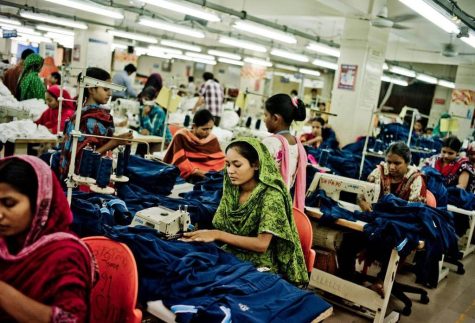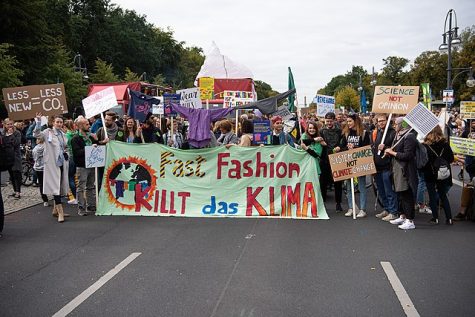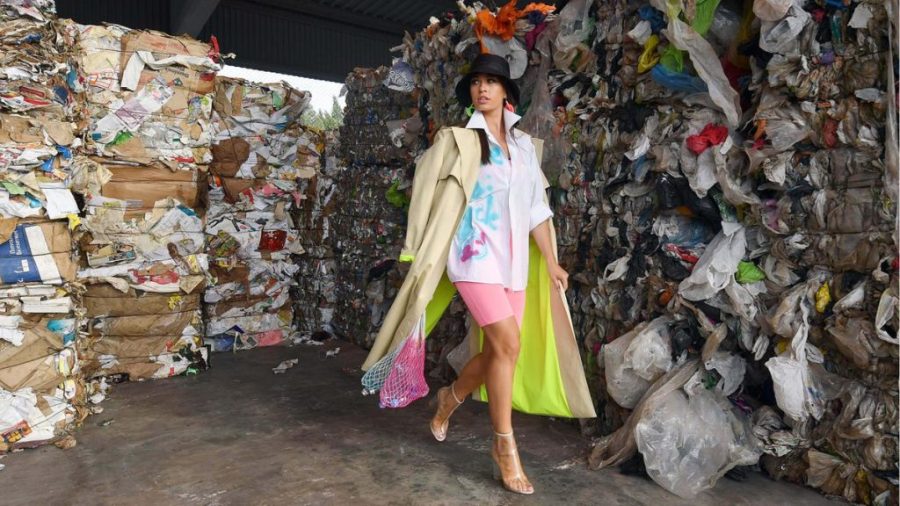The Dark Reality of Fast Fashion
Buying clothes has never been easier for teenagers. Teens nowadays can find cute, affordable clothes without even leaving the comfort of their homes and can have clothes shipped to them with just the click of a button. This phenomenon within the fashion industry is called fast fashion.
Fast fashion sounds like paradise, but it harms the planet and exploits workers. It involves the mass production of clothes made by the most popular clothing brands, which heavily affects the biosphere. Fast fashion involves big companies who design clothes that will sell quickly and follow micro trends within the fashion industry. Once these trends cease to exist, clothes are thrown out and then added to the mountains of trash in the ocean. Some examples of fast fashion companies include Shein, H&M, Forever 21, and Zara, all of which are popular among teens and young adults. Clothes produced by these companies are meant to be used for a good time, not a long time, and these clothing trends move quickly from the catwalk, to stores, to your garbage can. Fast fashion brands allow mainstream consumers to purchase trendy new looks at an affordable price, and oftentimes, these clothes are made so cheap they fall apart after a few weeks of wear. So next time you are looking for clothes, look for something durable and you can see yourself wearing over the next six months!

High schoolers are one of the main contributors to the fast fashion industry. There are 27.7 million teenagers in the United States, and according to Lexington Law, we spend an estimated $63 billion annually on clothes. The average middle class high school student spends $1,000 on clothes per year. If you compare that to the entire student body of San Ramon Valley High School, our school spends $1,500,000 per year.
This year, I asked 10 people at SRVHS if they have purchased from a fast-fashion brand and how. The data I gathered was not shocking, because purchasing from fast fashion brands is such a normal ritual of buying clothes for teens. 7 people said they have, and 5 of those people said they purchased the clothing via online shopping. Due to online shopping, fast fashion production is at an all-time high. Young people are attracted to buying from fast-fashion brands because the concept of fast fashion itself seems too good to be true- buy trendy clothes with your loose change online, wear it a couple of times, then throw it away.
In 2013, the reality of fast fashion became apparent. For example, the Rana Plaza clothing manufacturing complex in Bangladesh collapsed, killing 1,000 workers. Fast fashion garment makers work in dangerous environments for low wages, and have little to no fundamental human rights. Furthermore, they work with toxic chemicals and brutal practices that affect their mental and physical health. Textile dyes pollute clean water, and polyester, one of the most popular materials, is derived from fossil fuels, which causes global warming. When cheap textiles are washed, plastic microfibers are shed, and it adds to increasing levels of pollution in the ocean. These dyes and microfibers are released into the wild, negatively affecting animals. When animals ingest these chemicals, it can pollute the entire food chain and physical environment. Some companies use real animal furs, including cat and dog furs, and sell them to unknowing consumers as faux fur.

Zara, a big player in the fast fashion industry, started in Spain in 1975. When Zara arrived in the United States in the 90s, Americans first heard the term “fast fashion.” For Zara producers, it takes 15 days to bring a design from the catwalk to being distributed to stores all over the world. Many brands have claimed to be “going green” and introduce new systems that recycle clothes produced, but only 0.1% of these clothes are actually recycled.
Even so, there is hope amidst the chaos of fast fashion. Here are some easy ways to avoid contributing to fast fashion: thrifting and buying from sustainable brands, simplifying your wardrobe, donating clothes that you can’t keep, and only buying quality clothes that will last a while. In order to solve the problem of fast fashion, the entire fashion industry must be reformed, starting with fast-fashion’s main contributors- American high schoolers.












